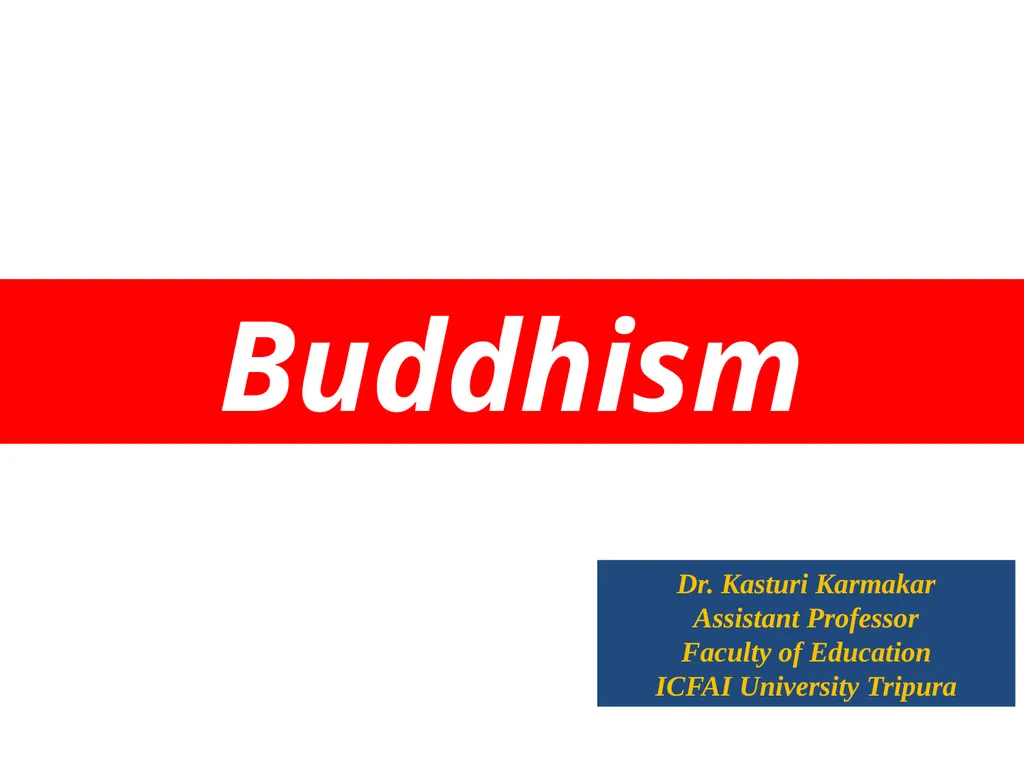Buddhism Dr. Kasturi Karmakar Assistant Professor
Author : olivia-moreira | Published Date : 2025-05-17
Description: Buddhism Dr Kasturi Karmakar Assistant Professor Faculty of Education ICFAI University Tripura The most striking feature of Buddhism is the Doctrine of NonSelf Anatta Buddhism advances the theory of Nirvana Nirvana is a state total
Presentation Embed Code
Download Presentation
Download
Presentation The PPT/PDF document
"Buddhism Dr. Kasturi Karmakar Assistant Professor" is the property of its rightful owner.
Permission is granted to download and print the materials on this website for personal, non-commercial use only,
and to display it on your personal computer provided you do not modify the materials and that you retain all
copyright notices contained in the materials. By downloading content from our website, you accept the terms of
this agreement.
Transcript:Buddhism Dr. Kasturi Karmakar Assistant Professor:
Buddhism Dr. Kasturi Karmakar Assistant Professor Faculty of Education ICFAI University Tripura The most striking feature of Buddhism is the Doctrine of Non-Self (Anatta). Buddhism advances the theory of Nirvana. Nirvana is a state total freedom and no sufferings, with perfect knowledge, perfect peace and perfect wisdom, man is free from all bondage in the state of Nirvana. Lord Buddha taught his followers four ‘Noble Truths’ or ‘Aryasatya’. Principles of Buddhism The four noble truths presented by Buddha are The Truth of suffering (Dukkha). The truth of the origin of suffering (Samudaya). The truth of the cessation of suffering (Nirodha). The truth of the path to the cessation of suffering (Marga). Principles of Buddhism Principles of Buddhism The eight fold path to Nirvana suggested by the Buddha are Right to Belief Right to Memory Right to Speech Right to Thought Right to Meditate Right to Effort Right to Conduct Right to Action Classification of Buddhism School Hinayana School (Lesser Vehicle) Its followers believed in the original teaching of Buddha. They sought individual salvation through self-discipline and meditation. They did not believe in idol worship. They favour Pali language. It is known as ‘Southern Buddhist Religion’ because it prevailed in South India. (Sri Lanka, Burma etc.) There wee two sub-sects of Hinayana i.e. Vaibhasika and Sautrantika Mahayana School (Greater Vehile) It followers believed in the heavenliness of Buddha. They sought the salvation of all through the grace and help of Buddha and Bodhisattva. They believe in idol worship. They favoured Sanskrit language. It is known as ‘Northern Buddhist Religion’ because it prevailed in North India and religions like China, Korea, Japan etc. Classification of Buddhism School Educational Philosophy Buddhist education offered to impart education for all. Many people shifted to Buddhist educational system. It was for the first time in India that education was institutionalized on a large scale during Buddhist movement. It is also a historic fact that with the arrival of Buddhist era, great international centre of education like Nalanda, Takshashila, Vikramshila, Ballabhi, Odantapuri, Nadia, Amravati, Nagahalla and Sarnath were in prominence. Educational centre in Buddha period developed in Viharas and Sanghas. Aims of Education To follow the moral values of Buddhist religion. To eradicate Vedic Karmakanda or Ritualism. To provide education in the language of masses i.e. Pali. To give up caste system. To achieve the final goal of Nirvana. To emphasize the progress and development of the














